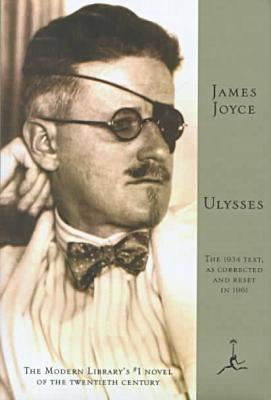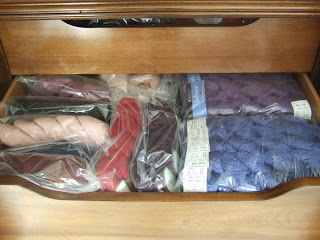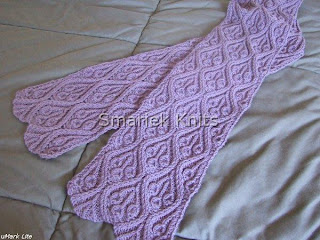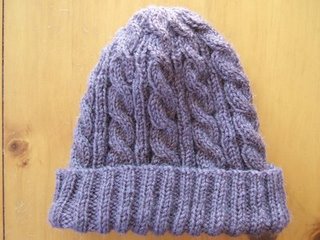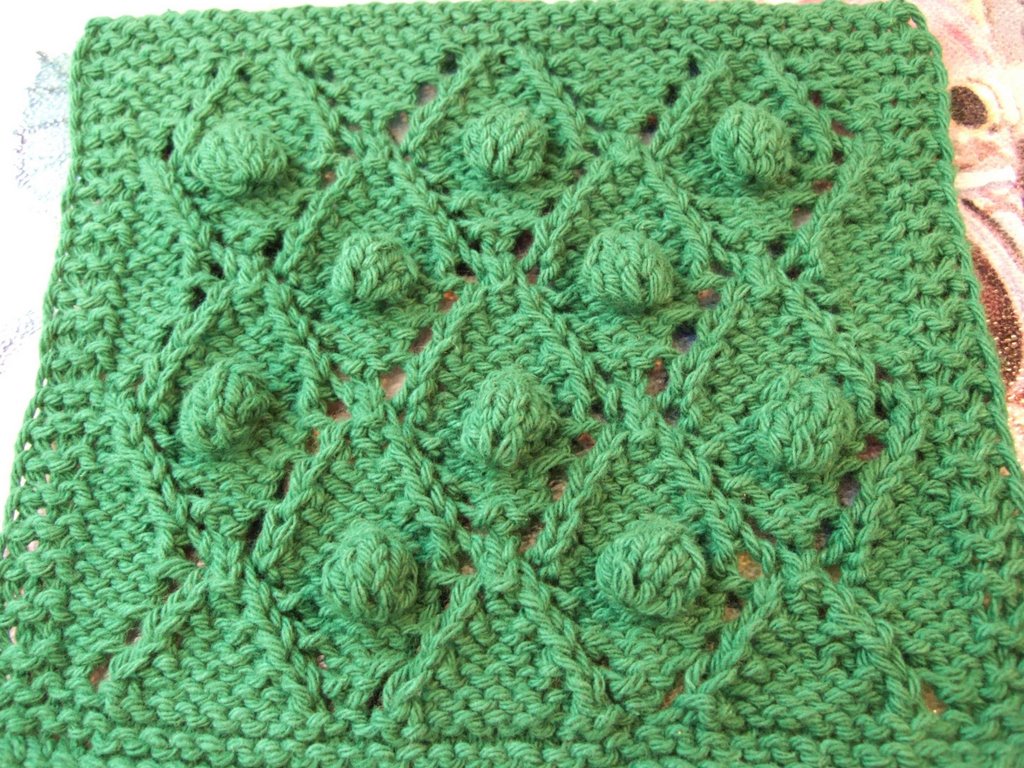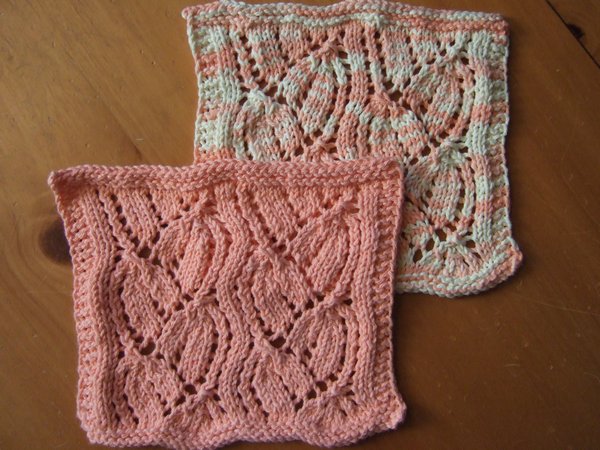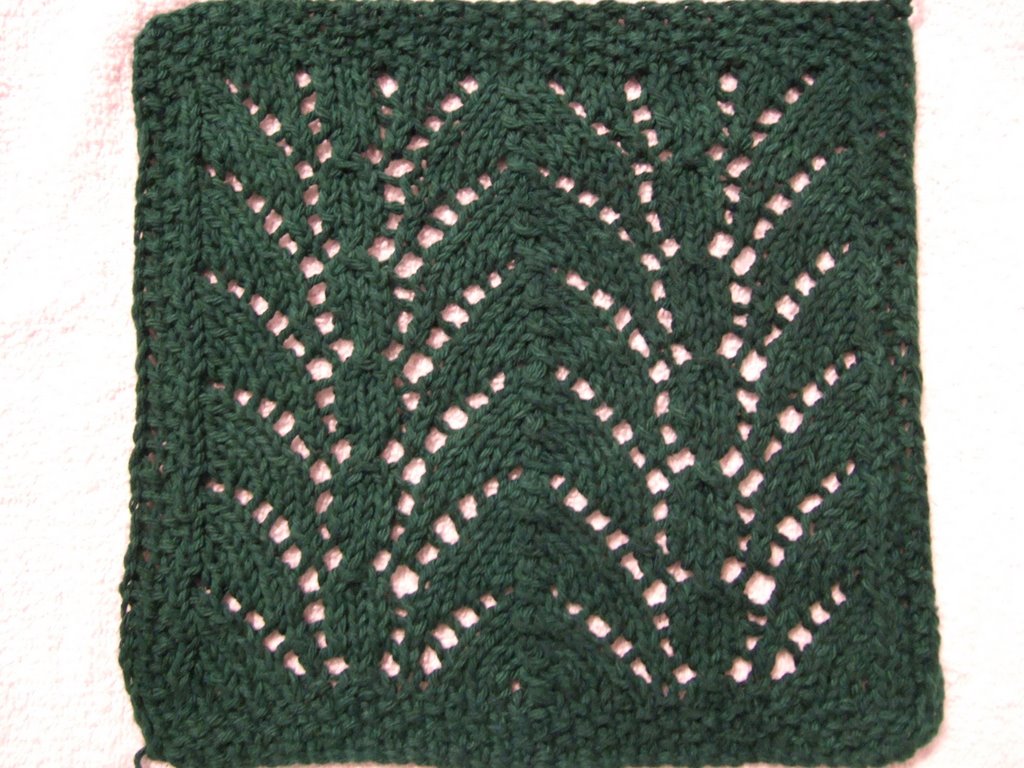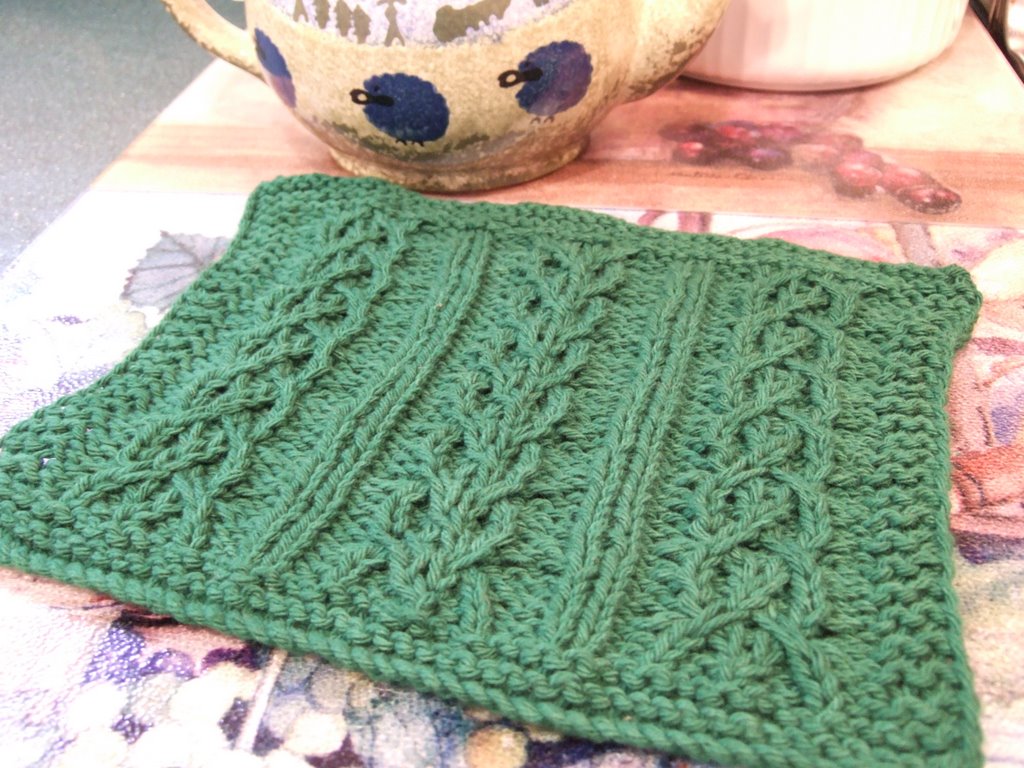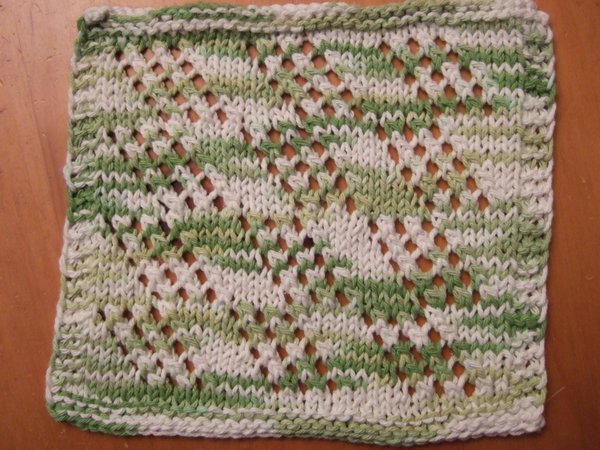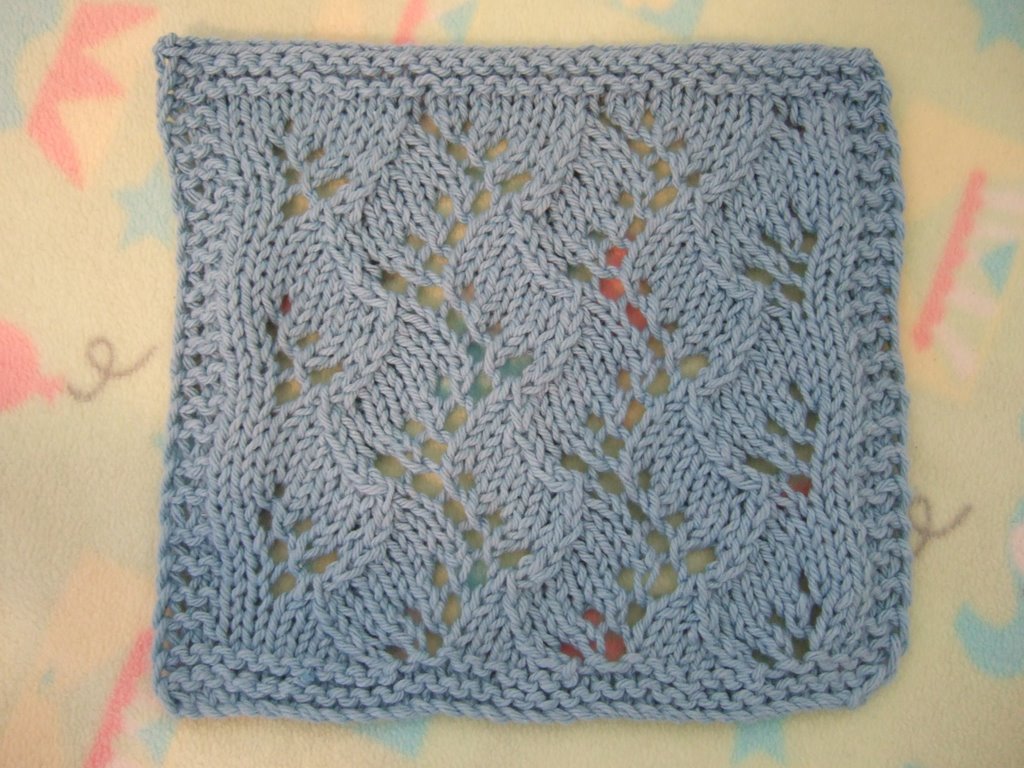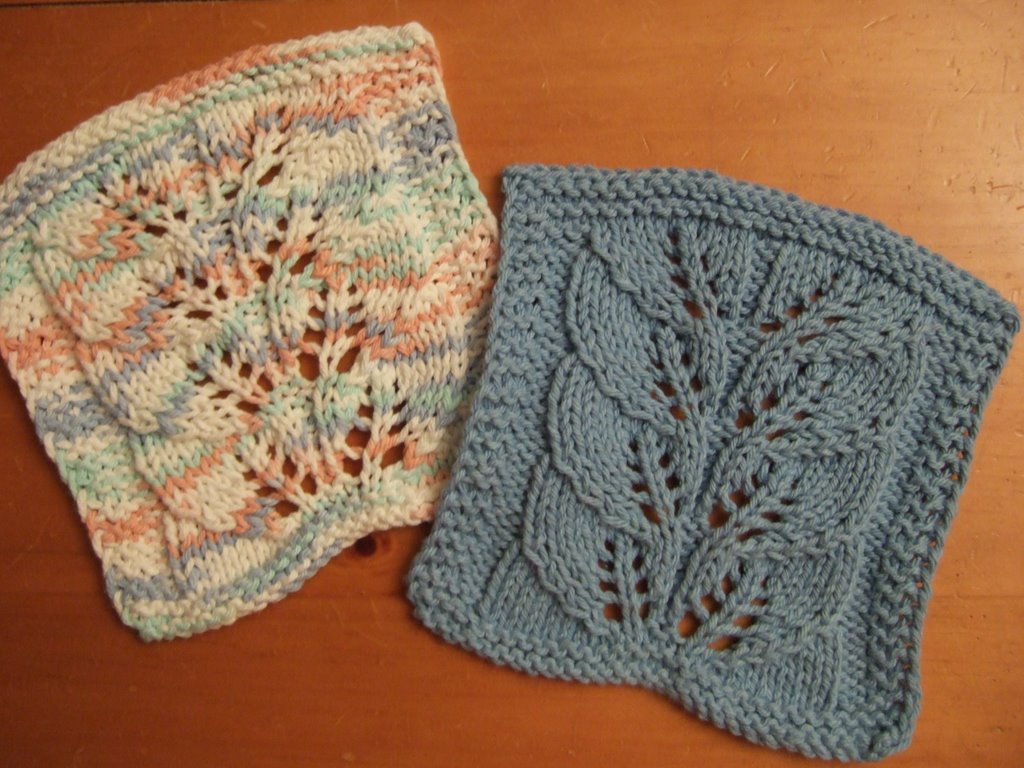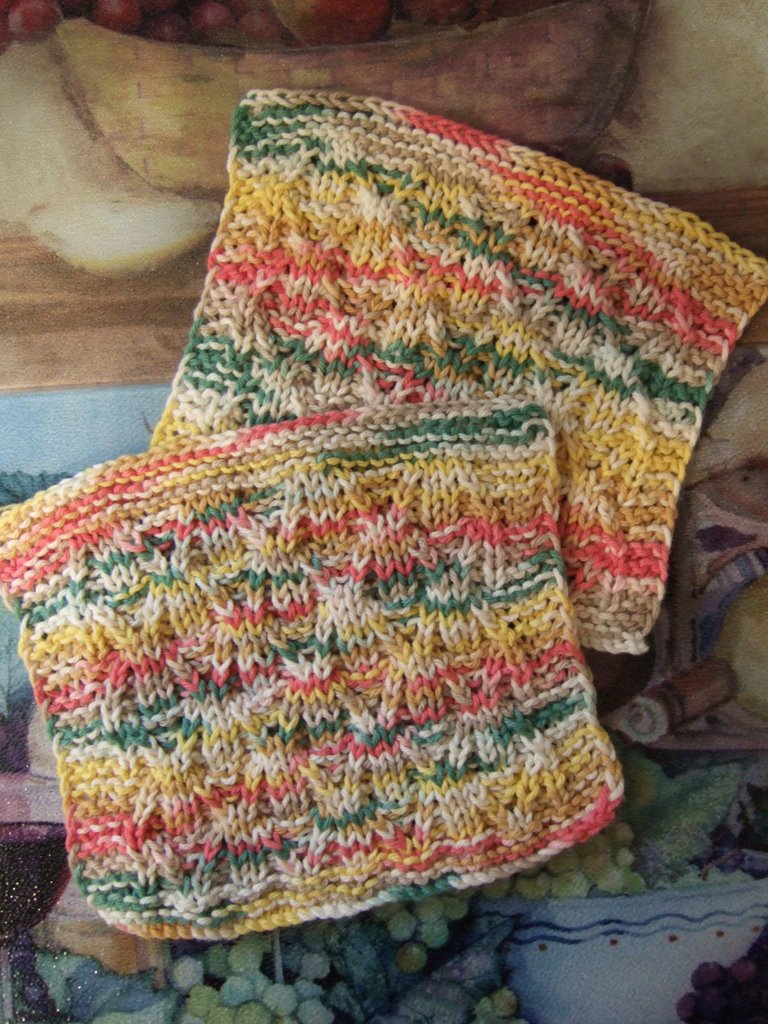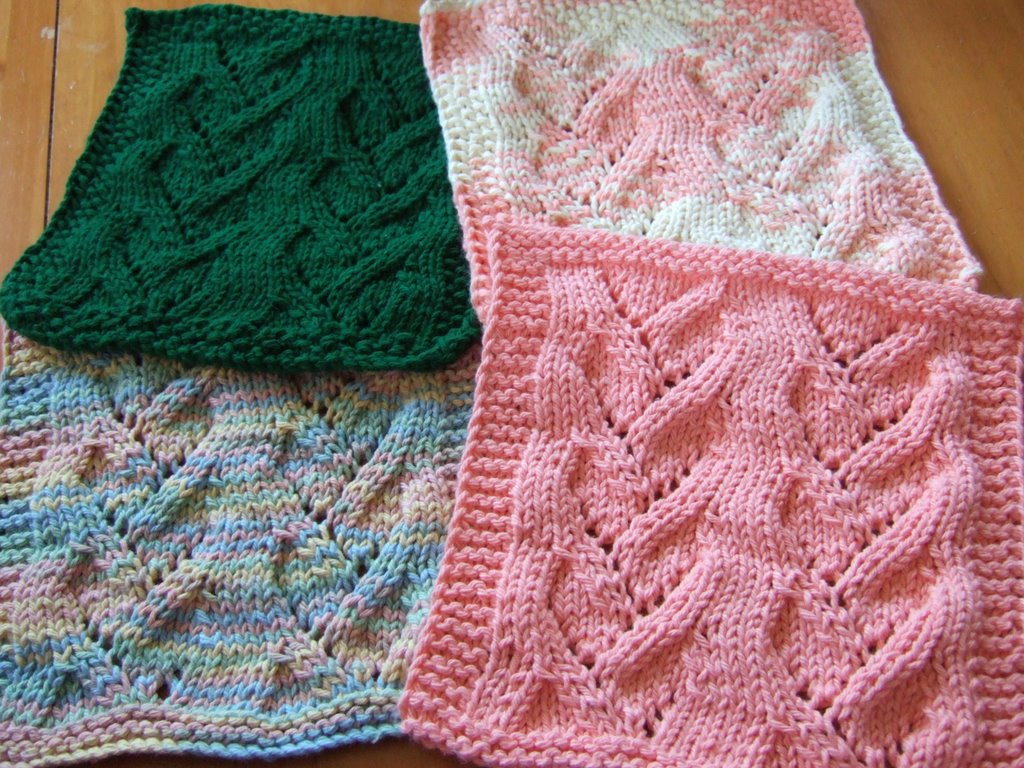.
Pattern: Marijke Scarf (see below)
Yarn: Online Linie Marly, 4.5 balls
Needles: 4.0 mm (US6)
Finished size, blocked: 70" x 8" (73" with scalloped edge)
.
I've never been very good at naming patterns. It's really rather lame how many of them have been named after SciFi worlds or inspired by names in novels. They tend to be neither memorable nor catchy names. They're just names
I like. And sometimes they'll even be hard for people to remember if they are trying to Google it. This Marijke Scarf is a good example. As an American speaker of English, I can understand a tendency to want to pronounce this name the way it is spelled, mah-rij-keh, or something similar. Marijke is a Dutch name I particularly like, and it's pronounced muh-RYE-kah. If it's hard to remember or spell, you can think of this as the Marika Scarf or Marike Scarf. This scarf doesn't get the same naming theme as my
series of cable scarves because it is not a true cable pattern, despite looking somewhat cable-like.
After using the extrafine merino Tebe yarn in my
Paquin Scarf, I was reminded of how the yarn was somewhat similar to the Online Marly yarn I used for my
Ariel Scarf. So I dug out some purple Marly yarn and started to push it around my needles for a bit. This purple Marly felt much softer than I remembered the green one to be, and I think there is a possibility of differences in softness between colors in the same yarn (as I had experienced with Elann's Luxury Superwash Merino DK). One thing that drove me crazy with the purple Marly yarn is that I found knots in balls #1, #2, and #4. With this and the fact that I couldn't get the yarn to spit splice -- despite it being 100% (non-superwash) wool -- I ended up spending 1.5 hours weaving in
18 ends! I thought that was way too many ends to weave in for a scarf. (That worked out to: 2 ends each for each edge; 8 ends for joining balls #2, #3, #4, & #5; 2 ends at the center where I grafted both halves; 6 ends for joining where the knots occurred. Total is 18 ends to weave in.)
I started working this scarf with a wider edge border and decided that I did not like it that way, so I reduced it. The scarf seemed too narrow and scrunched up as I was knitting it, however I vaguely recall the Ariel Scarf stretching out quite a bit during the blocking process, so I wasn't too concerned. It should look fine after blocking. I also thought the pattern looked better without a bottom edge border, I didn't want anything to detract from the pretty scalloped bottom edge. I had a bit of a rough start with the scarf. My brain processed "K2 through back loop" as "K2
together htrough back loop". Big difference, so I couldn't figure out why my stitch count was off and thought for a brief period that there was an error in the pattern. Of course the problem turned out to be user error. PEBKNAC. Problem Exists Between Knitting Needles and Chair.
I cast on 41 stitches for this scarf, using DK weight yarn. For added width or to adjust for using a lighter/thinner yarn, you can also cast on 59 stitches instead of 41. My scarf looked narrow while I was knitting it, but I stuck with 41 stitches since I knew (from having knit with it before) that it would stretch out with blocking. I didn't want the scarf to end up too wide after blocking. I knit the scarf in two halves, from edge to center, and grafted them at the center so that the pattern would be right-side-up when the ends are dangling in front. It's the same symmetry issue I had in my
Regina Scarf and
Paquin Scarf. The scarf was 56" x 6" unblocked, 70" x 8" after blocking (73" if you count the scalloped edge). I wanted the scalloped edge at the bottom, but you can block it even/flat if that is what you prefer.
The scarf benefits from blocking so that the pattern can "bloom". Otherwise the pattern looks scrunched up and not as pretty. Because of this, I would suggest using a yarn with natural fibers (viz. wool, alpaca, etc), so that you can block it. Acrylic does not block well and I really don't think it would be a good choice for this pattern.
I'm not sure of yardage for this scarf. I used less than 5 balls. The yarn label says 130m/142yds per 50gm/1.75oz ball, however Elann measured one ball at 104m/113yds. I took a picture of the yarn label when I used Marly for my Ariel Scarf, you can see the
photo of the yarn label in this post). I'd have to take a guess at 500-ish yards for this scarf.
The scarf feels nice and soft wrapped around my neck, and it is a good length for wrapping around my neck with both ends hanging down the front. It has nice drape with this pattern. This scarf will be gifted, however I'm already thinking about knitting another one for myself.

.
Marijke Scarf© Designed by S.M. Kahn, March 2008
Smariek Knits -=<>=- http://smariek.blogspot.com
YARN, NEEDLE & GAUGE:
Online Linie Marly (DK weight yarn), about 500 yards (more if you want a longer scarf)
4.0 mm (US6)
Guage is not critical. Use a needle size appropriate for the yarn you are using. Thicker yarn & larger needles will give you a larger scarf. Thinner yarn & smaller needles will give you a smaller scarf.
NOTES:
K = Knit
K1-B (Knit 1 through back loop) = Insert needle into the back loop of the stitch and knit it.
K2-B (Knit 2 through back loop) = Same as K1-b, except you knit 2 stitches through the back loop (one stitch after the other, not K2Tog through back loop).
K2Tog = Knit 2 Together
M1 (Make One) = Insert needle from behind under running thread between the stitch just worked and the next stitch, and PURL this thread.
M5 (Make Five, a 5 stitch increase) = (K1, YO, K1, YO, K1) into the next stitch.
P = Purl
P2Tog = Purl 2 stitches together
P3Tog = Purl 3 stitches together
SK2P (Slip 1, Knit 2 Together, Pass over) is done as follows:
1. Slip 1 stitch.
2. Knit 2 stitches together.
3. Pass the slipped stitch over.
SSK = Slip, Slip, Knit
PATTERN INSTRUCTIONS:
Cast on 41 stitches (or 59 stitches if you want a wider scarf).
Row 1: K2, P1, * M1, K2-B, P2Tog, P1, (K1-B, P2) twice, K1-B, P1, P2Tog, K2-B, M1, P1 *, end K2
Row 2: K4, * P2, (K2, P1) three times, K2, P2, K3 *, end K1
Row 3: K2, P2, * M1, K2-B, P2, SSK, P1, K1-B, P1, K2Tog, P2, K2-B, M1, P3 *, end last repeat P2, K2 instead of P3
Row 4: K5, * P2, K2, (P1, K1) twice, P1, K2, P2, K5 *
Row 5: K2, M5, * P2, M1, K2-B, P2, SSK, K1-B, K2Tog, P2, K2-B, M1, P2, M5 *, end K2
Row 6: K2, P5, * K3, P2, K2, P3, K2, P2, K3, P5 *, end K2
Row 7: K7, * P3, M1, K2-B, P2, SK2P, P2, K2-B, M1, P3, K5 *, end K2
Row 8: K2, P5, * K4, P2, K2, P1, K2, P2, K4, P5 *, end K2
Row 9: K2, SSK, K1, K2Tog, * P2, M5, P1, M1, K2-B, P2Tog, K1-B, P2Tog, K2-B, M1, P1, M5, P2, SSK, K1, K2Tog *, end K2
Row 10: K2, P3Tog, * K2, P5, K2, P2, K1, P1, K1, P2, K2, P5, K2, P3Tog *, end K2
Row 11: K2, K1-B, * P2, K5, P2, M1, K2-B, P3Tog, K2-B, M1, P2, K5, P2, K1-B *, end K2
Row 12: K2, P1, * K2, P5, K3, P2, K1, P2, K3, P5, K2, P1 *, end K2
Row 13: K2, K1-B, * P2, SSK, K1, K2Tog, P3, K2-B, P1, K2-B, P3, SSK, K1, K2Tog, P2, K1-B *, end K2
Row 14: K2, P1, * K2, P3Tog, K3, P2, K1, P2, K3, P3Tog, K2, P1 *, end K2
Row 15: K2, K1-B, * P2, K1-B, P1, P2Tog, K2-B, M1, P1, M1, K2-B, P2Tog, P1, K1-B, P2, K1-B *, end K2
Row 16: K2, P1, * K2, P1, K2, P2, K3, P2, (K2, P1) twice *, end K2
Row 17: K2, K1-B, * P1, K2Tog, P2, K2-B, M1, P3, M1, K2-B, P2, SSK, P1, K1-B * , end K2
Row 18: K2, P1, * K1, P1, K2, P2, K5, P2, K2, P1, K1, P1 *, end K2
Row 19: K2, K1-B, * K2Tog, P2, K2-B, M1, P2, M5, P2, M1, K2-B, P2, SSK, K1-B *, end K2
Row 20: K2, P2, * K2, P2, K3, P5, K3, P2, K2, P3 *, end P2, K2 instead of P3
Row 21: K2, K2Tog, * P2, K2-B, M1, P3, K5, P3, M1, K2-B, P2, SK2P *, end last repeat SSK, K2 instead of SK2P
Row 22: K2, P1, * K2, P2, K4, P5, K4, P2, K2, P1 *, end K2
Row 23: K2, K1-B, * P2Tog, K2-B, M1, P1, M5, P2, SSK, K1, K2Tog, P2, M5, P1, M1, K2-B, P2Tog, K1-B *, end K2
Row 24: K2, P1, * K1, P2, K2, P5, K2, P3Tog, K2, P5, K2, P2, K1, P1 *, end K2
Row 25: K2, P2Tog, * K2-B, M1, P2, K5, P2, K1-B, P2, K5, P2, M1, K2-B, P3Tog *, end last repeat P2Tog, K2 instead of P3Tog
Row 26: K3, * P2, K3, P5, K2, P1, K2, P5, K3, P2, K1 *, end K2
Row 27: K2, P1, * K2-B, P3, SSK, K1, K2Tog, P2, K1-B, P2, SSK, K1, K2Tog, P3, K2-B, P1 *, end K2
Row 28: K3, * P2, K3, P3Tog, K2, P1, K2, P3Tog, K3, P2, K1 *, end K2
Repeat rows 1 to 28 for pattern, knit until scarf is half of desired length.
Do not bind off. Place stitches on stitch holder, spare knitting needle, or whatever works for you.
Knit another half, then graft both halves at the center using the Kitchener Stitch.
Weave in ends. Block scarf to make pattern "bloom". You can choose to block the edges straight/flat, or make them scalloped.

It can be challenging to take photos of my knitting. Miss M always wants to "help" by patting, pulling, or flipping over the knitting. She paws at the knitting, or she's leaning on me while I'm taking the photo. I tend to get lots of unfocused/blurry photos when she does the latter. The photo above is one of the better ones even though she was reaching for the scarf.
And here are a couple more photos of the scarf...
.
Stitches used in this scarf include:
Medallion with Cherries, BW2 pg 141
.
22 st/4 inches 4.0-4.5 mm (US 6-7)
.























